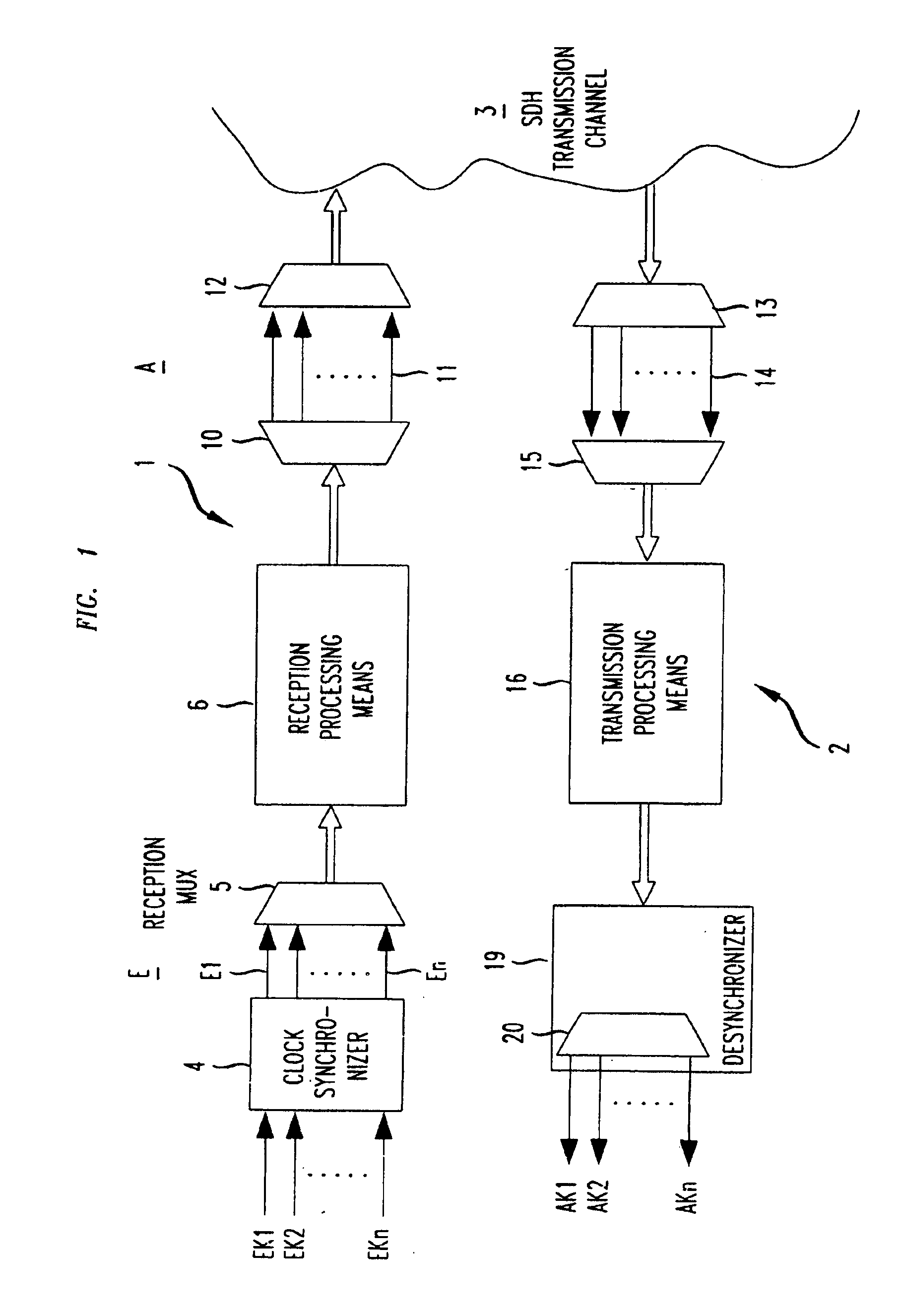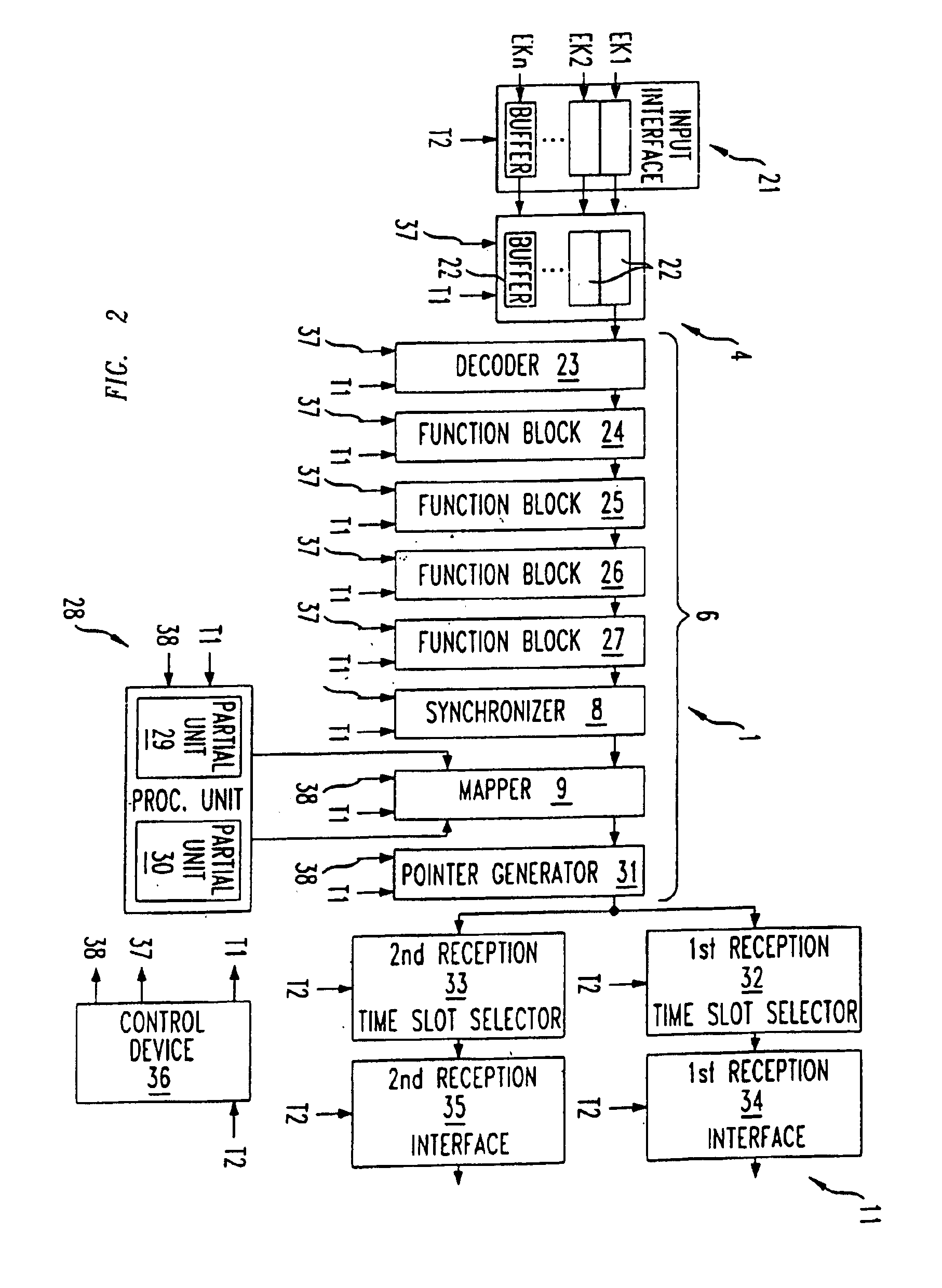Circuit for transmitting plesiochronous signals in a SDH system
- Summary
- Abstract
- Description
- Claims
- Application Information
AI Technical Summary
Benefits of technology
Problems solved by technology
Method used
Image
Examples
Embodiment Construction
According to FIG. 1, an SDH transmission system contains a circuit arrangement for a receiving part 1 and a circuit arrangement for a transmission part 2. The reception part 1 and the transmission part 2 are connected via suitable interfaces to an SDH transmission channel 3 shown only schematically. By means of the SDH transmission system shown in FIG. 1 parallel plesiochronous signals are received, processed in the reception part 1, and sent out as “synchronized” signals on the SDH transmission channel 3. After the transmission of the “synchronized” signals, the plesiochronous structure of the signals is reconstituted in the transmission part 2 before they are issued by the transmission part 2 to the parallel output channels AK1, AK2. . . .
The reception part 1 receives at its input side several parallel plesiochronous signals. To this end, several mutually parallel input channels EK1, EK2, . . . EKn are arranged. These input channels EK1, EK2, . . . EKn are connected to a clock syn...
PUM
 Login to View More
Login to View More Abstract
Description
Claims
Application Information
 Login to View More
Login to View More - R&D
- Intellectual Property
- Life Sciences
- Materials
- Tech Scout
- Unparalleled Data Quality
- Higher Quality Content
- 60% Fewer Hallucinations
Browse by: Latest US Patents, China's latest patents, Technical Efficacy Thesaurus, Application Domain, Technology Topic, Popular Technical Reports.
© 2025 PatSnap. All rights reserved.Legal|Privacy policy|Modern Slavery Act Transparency Statement|Sitemap|About US| Contact US: help@patsnap.com



